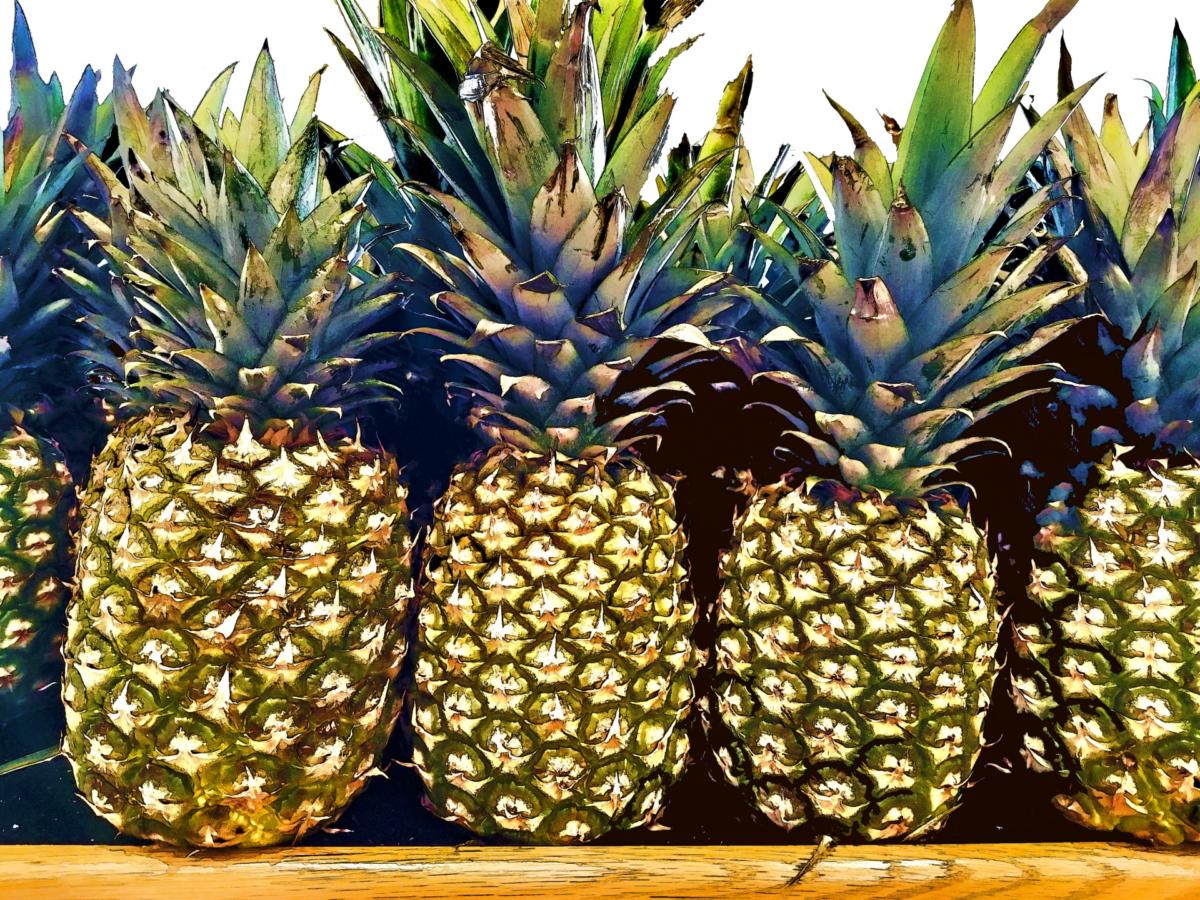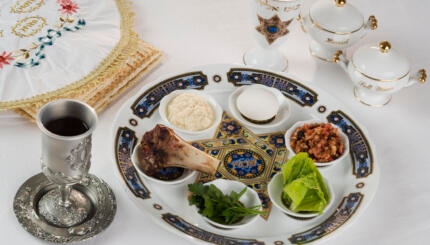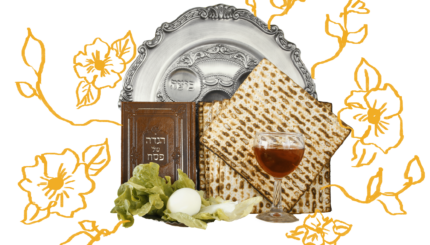In the spring of 2020, as it was for so many all over America, our home was filled with the chaos and tumult of two kids adjusting to virtual school, one preschooler desperately trying to find things to do and people to connect with (and, in our case, a new dog). Meanwhile, my husband and I, both rabbis, attempted to simultaneously juggle the needs of our jobs and the demands of our children, and the reality of Passover’s impending arrival finally started to sink in. On one of my many trips down to the basement to flip a load of laundry, I uncovered and started to dig through our precious Pesach boxes.
One box contains pillows for reclining, hand-made placemats, Passover board games, and the many, many haggadot that we’ve used over the years as we hosted dozens of people in our home for seder. The other box, just as overflowing, contains a wide assortment of all my best Passover “goodies”: costumes, stickers, building materials (for my “pretend” slaves), puppets, crafts, plague paraphernalia, masks, kids’ artwork, and hand-made seder plates. Some people, myself included, get overwhelmed by the enormity of this holiday and all its preparations. Even so, I feel a tremendous sense of excitement and anticipation knowing that we will be able to utilize all these wonderful things to create meaningful, memorable experiences for our family and for those with whom we share our seders. Sorting through these treasures, I began thinking about how I could make this year’s seder meaningful and memorable, and even delightful, during a time of serious fear and concern?
The answer, as it turns out, was not that hard to uncover. The emotions of this entire, traumatic, and unprecedented time that we’re all experiencing during this pandemic, are not necessarily so different from the experiences of our ancestors at the time of the Exodus from Egypt. When the ancient Israelites sat quarantined inside their homes, around their dinner tables, on the eve of their redemption, they too were scared and anxious about what was occurring outside, and about what the future would bring. They didn’t have the answers at hand so they turned to their new traditions and faith in God. They ate symbolic foods, they recited meaningful words, and were surrounded by the people they loved most. The Passover seder as we know it today, was created as an improvisational tool to help us fulfill our obligation to literally “feel as if we too had left Egypt.”
By the time I sit down to my own seder on a “normal” year under “normal” circumstances, I definitely feel as if I was enslaved (to the kitchen at the very least), and am on my way towards freedom. During the pandemic, however, I want to tap into the range of emotions in my heart as well as the “enslavements” on my mind, and look for a way to represent them meaningfully for myself, my family, and my community. Our seder plates traditionally have 6 symbolic foods on them, each representing a different element of the classic Passover story. Each year I add at least one new item to our plate, which reflects a more personal approach to relevant issues.

Help us keep Jewish knowledge accessible to millions of people around the world.
Your donation to My Jewish Learning fuels endless journeys of Jewish discovery. With your help, My Jewish Learning can continue to provide nonstop opportunities for learning, connection and growth.
I’d like to share pandemic additions to our Passover Seder Plate:
- Beans: When shopping for an indeterminate period of quarantine and Passover simultaneously, I thought carefully about the kinds of foods our family needed. Ideally I was looking for foods that wouldn’t spoil, wouldn’t break the bank, but also wouldn’t lead to a surplus of non-kosher-for-Passover items stock-piled throughout my house. Beans on our seder plate, which Sefardic Jews and a growing number of Ashkenazi Jews permit on Passover, acknowledge our privilege to have lasting, unspoilable, affordable and healthy food throughout the holiday and beyond.
- Pineapple: A pineapple, whose exterior is hard, rough and protective of its sweet and delicious inside, reminds me of the physical appearance of our first responders in their surgical gowns, plastic face shields, and life-saving masks as they battle daily. The care, compassion and sweetness in their hearts to save lives is hidden beneath their protective armor. By placing a pineapple on or near our seder plate, we can express our gratitude for the great lengths that our first responders go to in order to keep us and our families healthy and safe every day. This pineapple symbolizes the hope that they will have all that they need to do their jobs safely.
- Banana: The ripening of a banana has three distinct stages — when it is unripe and green; when it is perfectly yellow and delicious; and when it is overripe and spotted brown. As we go through these days of social distancing, we too go through distinct stages of how we handle the isolation and make efforts to stay connected to the outside world. Like bananas that soften as they ripen, we too, as a community, have softened and opened our hearts to new possibilities and opportunities to connect with one another. But also like bananas, whose peels remain intact to protect the fruit inside from exposure, regardless of its ripened-status, so too we continue to maintain our social distance as we work together to flatten the curve.
Next year, when I make my annual trek down to the basement to uncover our Passover boxes, I can count on finding the various things that bring back fond memories of seders and Passovers gone by; items that warm my heart, remind me of people I love, and my growing family. But what will I find in the box next year that recalls this year’s unique Passover experience? I’m confident that it will not be beans, pineapple or bananas (let’s hope not!), and I pray that the memory of this time will be one of intense family togetherness, gratitude for life’s most simple gifts, and the knowledge that perhaps we didn’t just survive, but we thrived.



